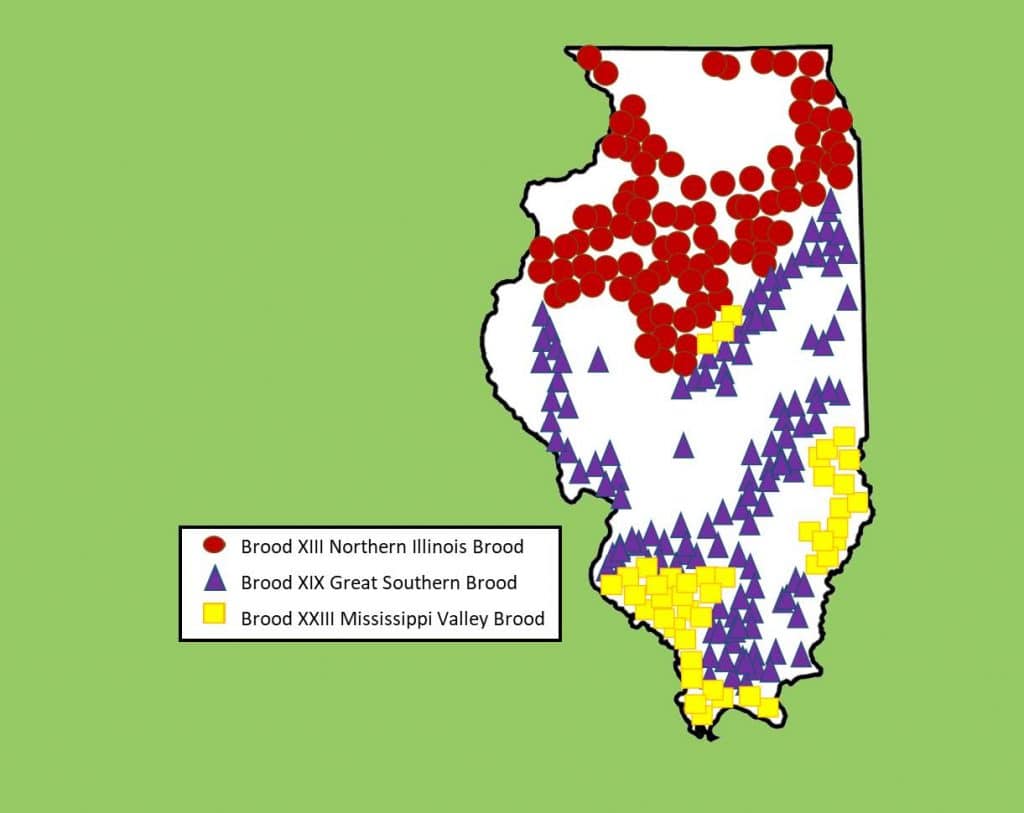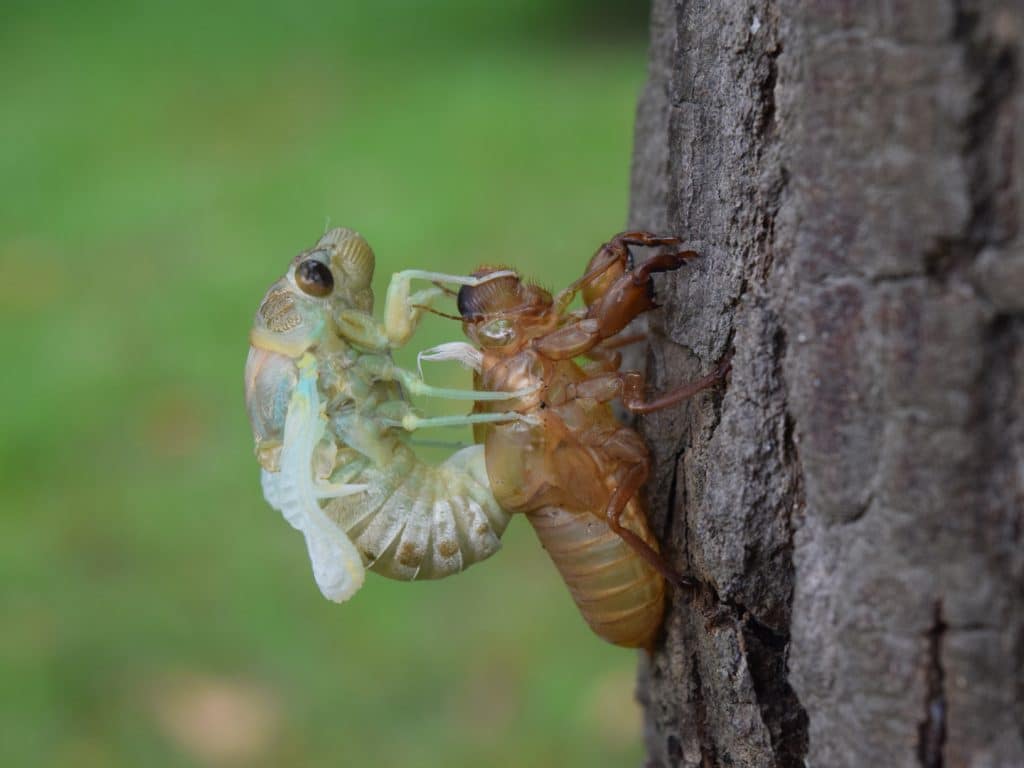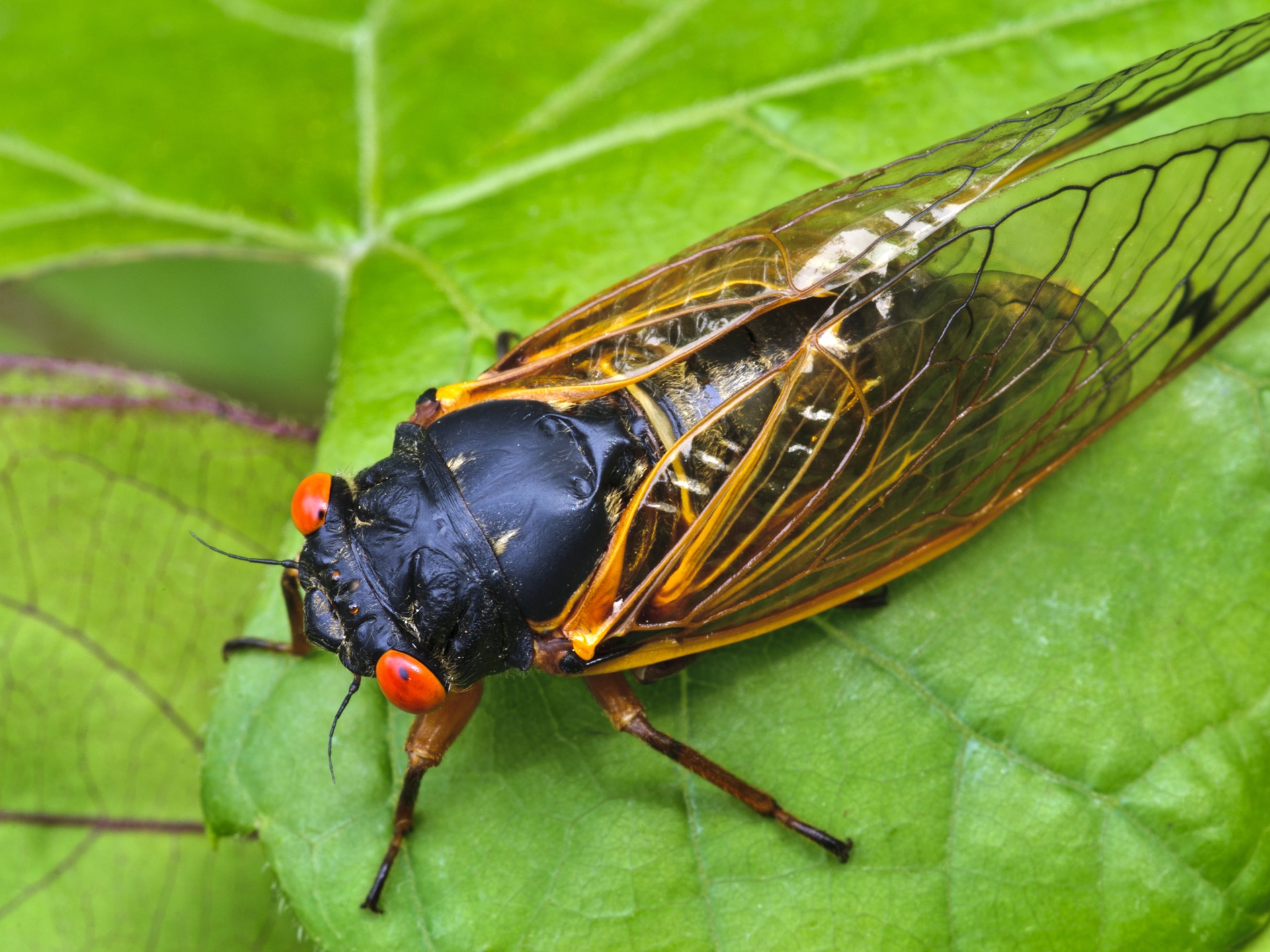Talk of the impending doom associated with this year’s cicada emergence has been floating around on social media and in the news for weeks, but should we all panic? The nursery experts here at Lurvey say, don’t panic about cicadas. Here are some of the facts about what to expect this growing season.
Multiple Broods Will Emerge This Year
While it is true that multiple broods will emerge in Illinois this year, three broods to be exact, all three broods will not emerge together in the same area. It will be a unique year in which different broods will be emerging throughout much of Illinois at the same time. The exception will be one area in Central Illinois, around Springfield, that has the potential for two broods to emerge in the same area. These broods aren’t expected to overlap to a large extent, however.
In May 2024, the 17-year cicada will appear in the northern part of Illinois while in the southern part of our state, the 13-year cicada will emerge. It is unknown how periodical cicadas know when to emerge, but we do know they emerge when soil temperatures are 64 degrees and spring rains have softened the soil, along with day temperatures in the low 80s and night temperatures in the 70s.
This brood of cicadas has a reputation for the largest emergence of cicadas known anywhere. They are harmless to humans and do not bite or sting.

The Cicada Lifecycle
As they emerge from the soil, cicada nymphs create tiny holes and then move toward vertical objects such as trees, houses, or wooden fences. Once they reach their destination, they shed the exoskeleton that had protected their wings and body during their journey upwards. The discarded exoskeleton is left behind as the adult cicada pumps fluids into its wings and flies away.

The annual cicadas exhibit a color palette ranging from green to black. Their eyes can be either green or black, and their wings are transparent with delicate green veins. On the other hand, the periodical cicadas sport a striking black hue, complemented by captivating red eyes and wings that are transparent, with veins varying from red to orange. These captivating creatures measure approximately 1-¼ to 1-½ inches in length. Their life cycle lasts around 4 weeks, during which they emerge, briefly feed, engage in mating (accompanied by their distinct noise or song), females lay eggs, and eventually meet their demise. Worry not, cicadas pose no threat to humans as they neither bite nor sting. They tend to stay within a short distance of less than half a mile from where they first emerge.
What About Damage to My Landscape?
Cicadas may harm small deciduous trees or shrubs in their egg-laying process but seldom damage evergreens. The female cicada uses her ovipositor to make slits in the thinnest twigs of trees and shrubs to lay her eggs. The cicada eggs hatch in 6 to 7 weeks, the nymphs fall to the ground, burrow into the soil, and won’t be seen again for the next 13 or 17 years. The slits can cause the small twigs to dry or break off but won’t cause plant death. You can prevent damage to small trees and shrubs by covering them with netting, cheesecloth, or tulle; making sure it is secure around the base of the plant. You could also choose to delay planting until July when the cicada’s life cycle is complete, but again, don’t panic about cicadas.
What About Insecticides to Control the Cicadas?
Both the Morton Arboretum and the Illinois Extension do not recommend insecticide use. Studies have shown there is a minor difference in the amount of stem damage between treated and untreated test plots and cicadas are a great source of food for various animals including birds, raccoons, cats, dogs, and other animals. A few practical control methods include the use of peppermint, which cicadas don’t like the smell of, or spraying plants with water as they do not like to get wet.
The good news is that newer housing developments or areas where soil or trees have been disturbed by removal or construction won’t have any cicadas buzzing around. Older neighborhoods that have experienced thousands of cicadas in the past will have them returning once again. On the bright side, when cicadas emerge, they do help aerate the lawn and soil. Additionally, after they die and decompose, they provide nutrition to the soil. Although we admit, the smell of a thousand dead cicadas can be quite repulsive.
The Bottom Line, Don’t Panic About Cicadas
The 13-year and 17-year broods are a true wonder of nature, so don’t panic about cicadas, enjoy them. Millions of insects will emerge for a fleeting time after 13 or 17 years of living underground! It’s a natural marvel in our region!!
For more information on periodical cicadas, please read this article from the University of Illinois Extension Office, or check out and share their 2024 Cicada Fact Sheet. If you have more questions, our plant health experts are always available to share their advice. They are also able to help you with any plants that are a bit under the weather. Utilize our Plant Rx tool to submit information on your sick plants and we will send you a plant prescription to help get them back on their feet!










